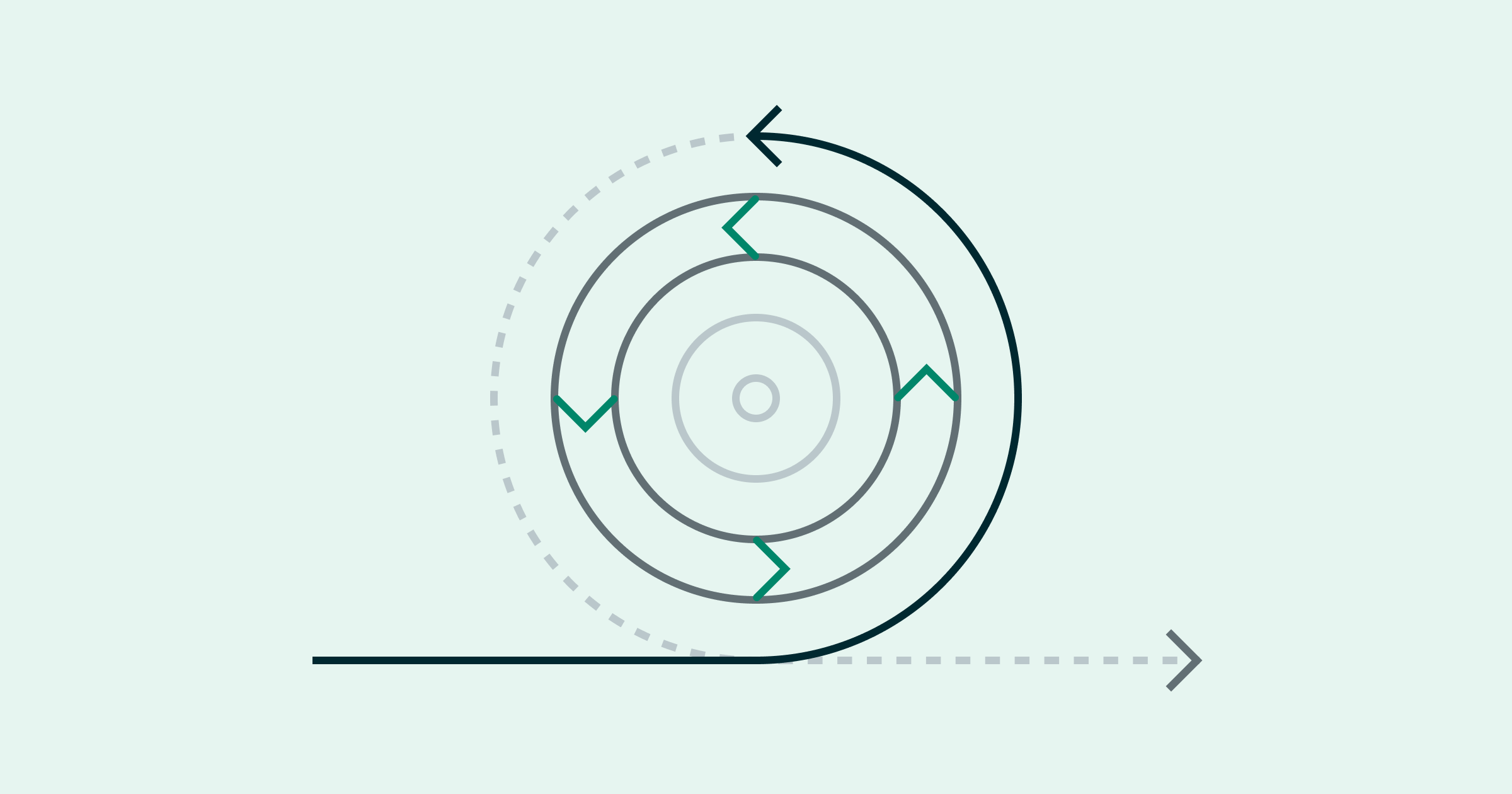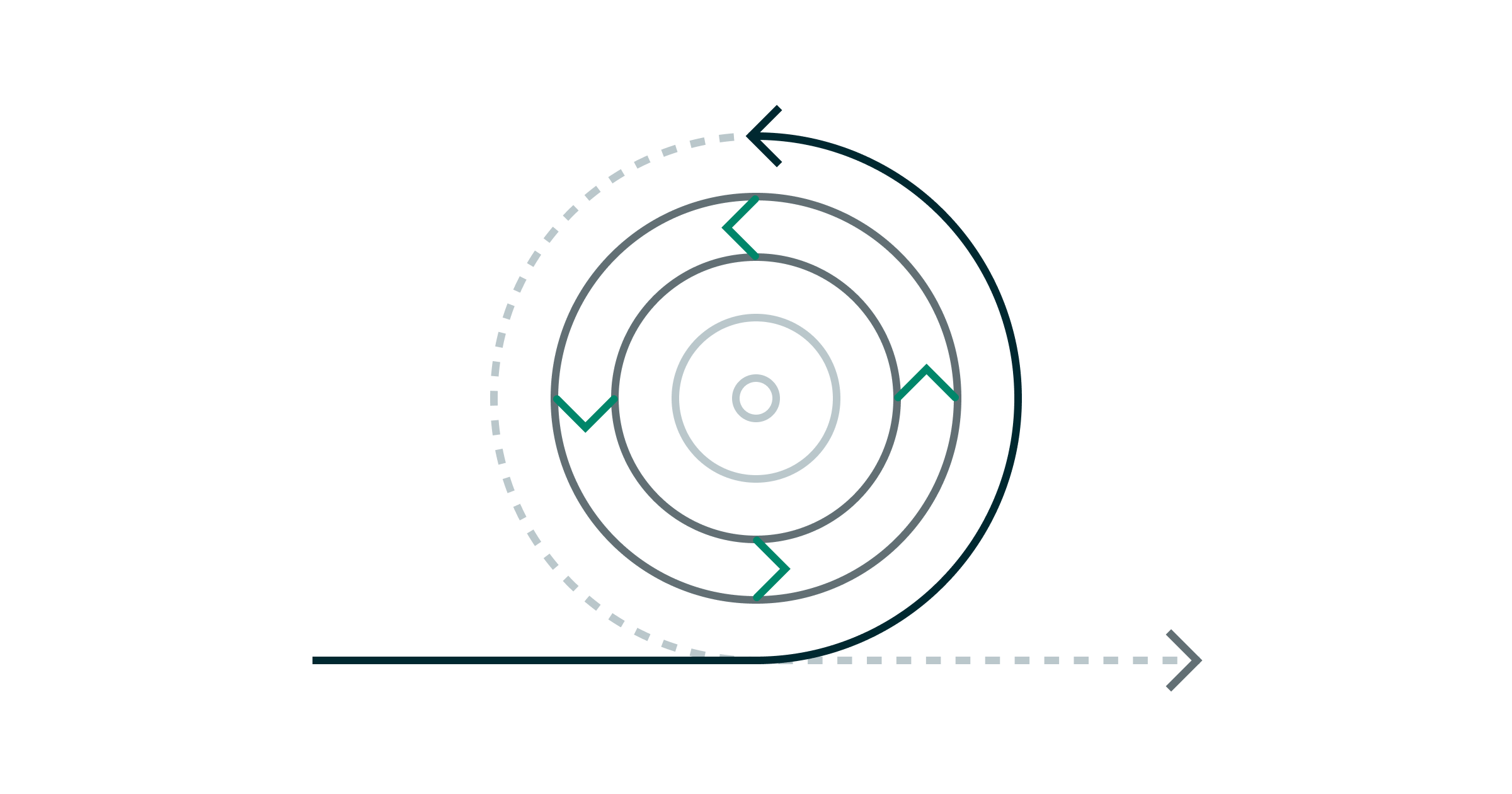Quantive is now part of WorkBoard. Get to know WorkBoard:
Introduction to OKRs and agile
Some organizations rely on OKRs for goal attainment, while others swear by the agile methodology for continuous progress toward a desired outcome. However, OKR and agile don’t have to be mutually exclusive — the best results come from using them together. Often, this involves creating agile OKRs.
Combining OKR and agile to create agile OKRs can foster a purpose-driven, streamlined, and effective way of achieving desired goals. In this article, we'll help you understand the purpose of OKR and agile — both individually, and as a united framework. To do so, we'll cover:
- What is the agile methodology?
- What are OKRs?
- The differences and similarities between OKR and agile
- Why OKRs are suited to support agile
- How OKR and agile work together
- The benefits of agile OKRs
What is the agile methodology?
Key takeaway: Agile is a project management approach that stresses the significance of continuous improvement and value-added activities, developed from software development methods that foster collaboration and iteration.
The Agile Manifesto includes five stages of principles and values, which are implemented in various frameworks such as Scrum, Kanban, SAFe Agile, and Lean Agile.
Agile 101
Agile uses a collaborative and iterative approach to project development, where an initial version of a product is developed and then continuously improved during sprints.
As such, improvements, updates, and fixes under the agile umbrella are made quickly, with value-added activities being prioritized.
The agile methodology was made to overcome the shortcomings of traditional project management methods (e.g., the waterfall methodology).
The agile manifesto
The Agile Manifesto, originally created by software developers, outlines 12 principles for the agile methodology:
- Satisfy customers
- Change requirements flexibly
- Deliver frequently
- Open collaboration
- Motivated and trusted individuals drive projects
- Face-to-face communication is preferred
- A working product is the goal
- Constant pace
- Technical excellence and good design
- Simplicity is a must
- Autonomy delivers the best results
- Regular reflections and adjustments
The 5 phases of the agile development lifecycle
The five stages of the agile development cycle work together to create a continuous feedback loop (aka sprint):
- Concept
- Design
- Development or iteration
- Release
- Review and monitor

Types of agile methodologies
Several frameworks fall under the agile umbrella, with Scrum, Kanban, SAFe agile, and Lean agile being the most popular.
Get the full breakdown on Agile methodology

What are OKRs?
In the context of organizational goal setting, OKRs (objectives and key results) are utilized to attain challenging, time-bound targets with quantifiable outcomes.
Objectives are short, qualitative descriptions of your intended outcome, while key results are two to four measurable milestones that track progress toward these objectives.
A simple formula for writing OKRs is:

The 5 stages of the OKR cycle
The OKR framework consists of five cyclical steps. These are:
- Define qualitative objectives
- Create two to four key results to measure goals and progress
- Align OKRs to organize efforts, resources, and strategy
- Track OKRs regularly to collect feedback and improve process
- Hold retrospectives once the OKR cycle is complete

Learn more about OKRs and their history

OKR and agile: Differences and similarities
Understanding how OKRs and agile compare can help us understand their complementary nature. This section covers the differences and similarities between OKR and agile.
Differences between OKRs and agile
- Focus: Agile is used to direct project management, while OKRs establish action-oriented goals for employees, teams, and wider organizations
- Time frame: OKR goals are typically set per quarter or year, while agile teams work in short sprints (1-4 weeks) to deliver product iterations continuously
- End goal: The agile process doesn’t have a defined end goal, while OKRs do
- Size: OKRs can be adopted by individuals, groups, and entire businesses, while the agile framework recommends team sizes of at least three members
Similarities between OKRs and agile
- Transparency: Agile teams ensure visibility across the agile development lifecycle, while those using OKRs require transparency to see how their work contributes to broader goals
- Frequent monitoring: Both OKR and agile teams need regular monitoring and check-in meetings to function effectively
- Collaboration: Collaboration is at the forefront of OKR and agile, with goal setting and product development requiring a coordinated approach
- Cyclical nature: OKR and agile involve cyclical processes, with agile focused on ongoing improvement and OKRs continuously updated at the end of (or during) the OKR cycle
- Flexible: Both OKR and agile methodologies are adaptable to change, where they embrace shifting circumstances and encourage the reprioritization of tasks and goals
How OKRs support agile
OKRs are a great tool to support agile initiatives because they share common principles and practices. Both OKRs and agile focus on:
- Outcomes over tasks
- Continuous feedback and improvement
- Alignment
Outcomes over tasks
OKRs help teams identify the most important objectives that will drive the organization forward. This aligns with agile, which delivers value to customers through iterative and incremental product development.
Continuous feedback and improvement
OKRs require regular check-ins and progress updates, allowing teams to adjust and pivots as needed. Agile teams also conduct regular retrospectives to reflect on their processes and identify areas for improvement.
Alignment
OKRs ensure that employees align around the same objectives, and progress is transparent to everyone. This aligns with agile's emphasis on collaboration and communication, keeping everyone on the same page and working toward the same goals.
Together, OKRs and agile provide a powerful approach for business, powering it through the fast-paced, rapidly changing environment of modern businesses.
Read more on how OKRs drive agility in our Global State of OKRs Report.
How OKR and agile work together
OKRs strengthen the agile process. They enhance the ‘how’ of each sprint, decentralizing decision-making and boosting accountability by focusing the backlog on a specific end goal.
Using OKRs and agile — by, for example, creating an agile OKR — can nurture complementary synergies, as the advantages of one methodology compensate for the pitfalls of the other.
You can make OKR and agile work for you in multiple ways, either by nesting one methodology into the other or giving both equal weights in the process. Here are a few ways of combining OKR and agile:
Creating agile OKRs
One way to integrate OKR and agile is by building OKRs using agile principles. This involves using an adapted sprint cycle to create your agile OKRs.
Planning
Identify your main OKRs for the coming period, appointing OKR product owners, scrum masters, and team members.
Strategy
Weave your OKRs into existing strategies and highlight critical performance nodes that need to be addressed.
Design
Prioritize OKRs and restructure to-do lists to accommodate these, weighing each component.
Systemize
Integrate and solidify OKRs into existing processes.
Meetings
Make OKRs a typical part of your meeting agenda, nesting these into each other.
Launching
Spearhead your OKRs using an initial performance management meeting and begin the process of continuous improvement.
Integrate OKRs into your agile routine
Another way of making OKR and agile work is to integrate OKRs into your agile routine.
This way you can regularly align OKR and agile principles, allowing you to assess progress quantitatively and reprioritize goals from one sprint to another. With sprints, you can split them into two sections, with teams working toward OKRs for the first half and responding to stakeholder feedback in the second half.
Incorporating OKRs will bring more transparency into agile sprints.
Use OKRs for agile operations
The agile methodology requires constant visibility. While some businesses use tools such as Slack for this, these can breed miscommunication and errors as teams and individuals on these platforms tend to be disjointed.
Therefore, specialized OKR software tools can act as a centralized hub for outlining progress, confidence, and updates — with ownership visible throughout the entire organization.
Align OKR and agile roles
OKR and agile teams have similar roles and levels of ownership. For agile, these roles consist of:
- A product owner: Who’s responsible for setting the direction of the agile cycle
- A team lead: Who instills agile principles
- An extended agile team: Who takes on the other aspects of the agile process
While the OKR process includes:
- An OKR champion: Who is an expert on OKRs and establishes the OKR cadence
- The product/project owner: Who sets the overarching focus and target of OKRs
- An extended team of KR owners: Who manage the tasks and actions required to fulfill OKRs
As the roles in both frameworks are similar, aligning the two can enhance ownership, collaboration, and cross-functional success, where progress is visible and steady across teams.
Benefits of agile OKRs
Not convinced about the power of using OKR and agile to create agile OKRs? Check out the following benefits.
Improved business outcomes
OKR and agile can work together to create superior outcomes. While agile achieves this by frequently testing products and improving them using feedback, OKRs do this by encouraging goal flexibility and the continuous measurement of progress.
A focused backlog
Relying on agile can make prioritizing backlog tasks difficult, as the agile methodology’s end goal of value generation is subjective.
By using OKRs to supplement the agile process and create agile OKRs, you can help your development team prioritize tasks, enabling it to see which tasks contribute to key results and which ones are irrelevant.
More effective meetings
Combining agile and OKRs improves the efficiency of your meetings. While both methodologies involve consistent meetings, agile has a short-term scope, while OKR focuses on more extended periods.
As such, combining the agile and OKRs to create agile OKRs help you maintain both a short- and long-term focus by ensuring all short-term activities align with long-term objectives.
Create measurable product iterations
OKRs can add measurability to each product iteration, making it an effective way to depict value throughout the agile development lifecycle. This way, your business can avoid making product improvements that are perceived as valuable but don’t necessarily yield results.
Create self-organized teams
OKRs act as a North Star for your organization, ensuring teams work toward overarching objectives. Teams are encouraged to ask themselves if the value created during each iteration brings the organization closer to company-wide goals.
As such, using OKR and agile can improve team autonomy, as OKRs remove ambiguities surrounding the end goal of the agile product lifecycle.
Getting started with agile OKRs
OKR and agile are compatible methodologies that allow businesses to achieve alignment, establish measurability, facilitate continuous improvement, and orient day-to-day operations toward long-term goals.
Therefore, using OKR and agile philosophies together to create agile OKRs is a great way to improve your business’s operations and adaptive capabilities.
Quantive empowers modern organizations to turn their ambitions into reality through strategic agility. It's where strategy, teams, and data come together to drive effective decision-making, streamline execution, and maximize performance.
As your company navigates today’s competitive landscape, you need an Always-On Strategy to continuously bridge the gap between current and desired business outcomes. Quantive brings together the technology, expertise, and passion to transform your strategy and playbooks from a static formulation to a feedback-driven engine for growth.
Whether you’re a fast-growing scale-up, a mid-market business looking to conquer, or a large enterprise looking for innovation, Quantive keeps you ahead – every step of the way. For more information, visit www.quantive.com.





